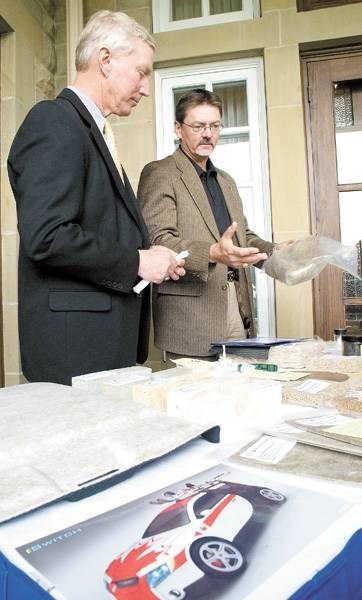The next car you buy could be made of hemp, thanks to a new $15 million research facility in Alberta.
Doug Horner, minister of advanced education and technology, said Thursday that the province would invest $15 million to create an Alberta Biomaterials Development Centre in Vegreville and at the University of Alberta.
"I didn't imagine that the bales I threw onto the back of a wagon would ever turn into anything but bedding," Horner said, making the announcement at Government House in Edmonton. But new technologies are offering new ways for farmers to get value out of their crops. "What was once waste will become new products like construction materials we can export worldwide."
The centre will help researchers develop new bioproducts and bring them to market, Horner said. "This is going to be your biodegradable car," he said, holding a car panel made from hemp. "We're going to use technology to build on our traditional industries and transform them."
Bioproducts will find new uses for Alberta's wood fibre, said Sustainable Resource Development Minister Ted Morton, making the announcement with Horner, and could help replace materials made from oil. "This will be a major trend in the coming decades and Alberta's positioned itself to be on the cutting edge of it."
The centre should also help traditional farmers get more money for their crops, Horner said. "The more products we can turn that bale of straw into, the more value in that bale there is to producers."
Lighter, stronger, greener
Crops such as wood, hemp or flax can be processed into boards, plastics or fabrics, according to Jan Slaski, a crop physiologist at the Alberta Research Council. These biomaterials make products such as plastics lighter, stronger and biodegradable.
"This is cement with fibres incorporated," he said, splitting a brick in two with a crunch to reveal the straws inside. Adding straw strengthens the concrete while reducing its weight, both useful qualities for construction.
All the products under development at the new centre will be made from crop residues so as to not divert crops from the food chain, Slaski says. Non-food crops such as hemp are often better sources of material anyway, he added. "You can get three to four times more biomass [with hemp] than from regular cereals."
John Wolodko, a polymer and composites engineer with the research council, was working with Calgary's Motive Industries on a biodegradable car body. The car is part of the company's bid to win the $10 million Progressive Automotive X Prize, an international competition to build a super-efficient commercial car.
Making the car from flax and hemp will make it lighter and more fuel efficient, Wolodko and Slaski explain, and make it easier to recycle when it wears out. "They're lighter and they're sustainable," Wolodko said. "As greenhouse gases and carbon credits become more prevalent, that's going to be an advantage."
Wolodko expects to have a concept car ready in about a year. Some European car manufacturers are already using biomaterials in their products, he added.
The centre will get about $9 million for equipment from the Advanced Education and Technology ministry, according to a press release, with Alberta Agriculture and the Alberta Research Council contributing $3 million each in-kind. Full details are available at www.advancededandtech.alberta.ca.




